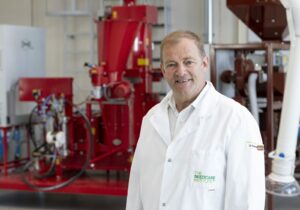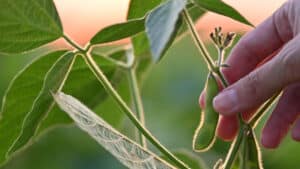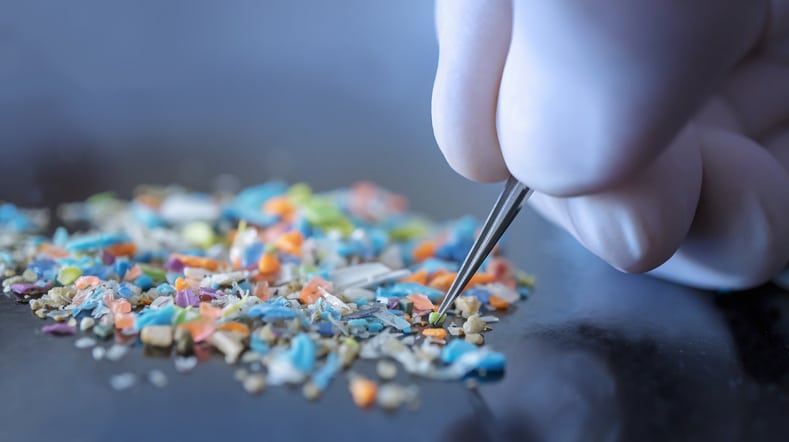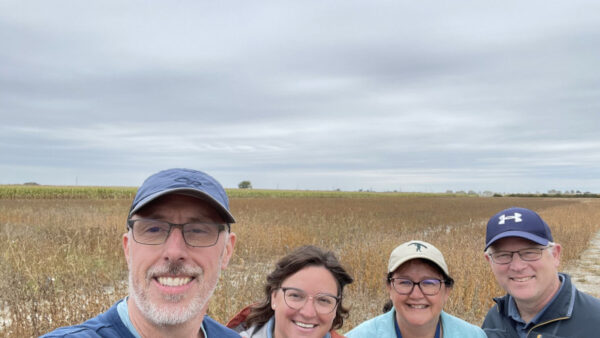Stewardship is fundamental to sustainable agriculture, and it all starts with the right information.
Stewardship involves implementing or supporting practices that protect or improve the quality of critical resources such as water, air, soil, pollinators, wildlife and crops. It is fundamental to sustainable agriculture and begins with knowledge and information about the products or operations being managed. Information for best practices for using seed treatment chemistries begins with the product label.
The Phillips McDougall Company, a global source of data and intelligence on herbicides, fungicides and insecticides, reports the cost of developing an active ingredient for agricultural crop protection including seed treatments has increased from $150 million or so in 1995 to about $286 million from 2010 to 2014. This includes $29 million for toxicology studies to develop and understand the safety levels of these products. This information is summarized with a safety signal word on the label.
Label Information

“I just want customers to know and think about how much time and effort goes into establishing even what signal words need to be on the product label,” says Carroll Moseley, Syngenta senior integrated pest management (IPM) stewardship manager for U.S. stewardship and regulatory policy. “The first thing people see on the label is the product name. It is there in large print. In smaller print, throughout the label, is important information about different sites and modes of action of each active ingredient in that product.”
Most all agricultural pesticide products have the site and mode of action identified on the front of the label.
The label explains what the product is and why the product is there. For example, Syngenta’s Clariva Elite Beans is described on its label as an insecticide and nematicide with fungicides. It is a seed treatment product for protection against damage from the list of insect and seedborne diseases.
Directly under that description, the specific active ingredients are listed, followed by the percentage of active ingredients in the product.
“This is not always easy,” Moseley says. “You have to make sure that you understand how these products cooperate and work with each other on that seed. You have to understand that if this treated seed is going to be stored for any length of time, that the treatment is safe and will not decrease the seed’s germination to any significant extent. That’s the tricky part,”
Every chemical substance described in open scientific literature is assigned a unique numerical identifier by the Chemical Abstracts Service (CAS), a division of the American Chemical Society. The CAS number is linked to basic chemical product, safety use information. Each active chemical ingredient in a product is identified by a CAS number on the label.
Perhaps the most important — and certainly the most expensive single word to determine — is the product’s safety signal or precautionary word, which is either “danger,” “warning” or “caution.” Products with the signal word “danger” are highest in toxicity.
“Acute six pack and acute toxicology studies provide an understanding not only about the product’s active ingredients and the toxicity related to them, but also about the inert ingredients that are used,” Moseley says. “We have to understand what is associated with those products in combination with all their ingredients to put a precautionary word on the label.”
The acute “six pack” is a battery of tests to provide information on health hazards likely to arise from a short-term exposure to a specific chemistry. These six tests include acute oral toxicity, acute dermal toxicity, acute inhalation toxicity, primary eye irritation, primary dermal irritation and dermal sensitization. Acute toxicity studies are conducted to determine the short-term adverse effects of a chemistry.
“I just want our customers to know and think about much time and effort goes into establishing even what the signal word that needs to be on that label,” he says. “These words indicate how acutely toxic the product is to humans and domestic animals.”
The signal word for Clariva Elite Beans is “caution.” This means the product is slightly toxic if eaten, absorbed through the skin or inhaled. When it comes into physical bodily contact, it causes slight eye or skin irritation.
Personal Protective Equipment
Stewardship is also being responsible for the safety and well-being of those who use and handle treated seed and seed treatment pesticides. Even for products with a “caution” signal word indicating slight toxicity, personal protective equipment (PPE) is required. Exactly what personal protective equipment is needed when applying these products is based on the product’s signal word and the exposure location.
For example, if the product user has eye-related concerns, goggles or maybe a full-face shield might be required. You can wear equipment that’s above and beyond what you necessarily need, but you shouldn’t be wearing less then what is listed on the label.
“Think about how much time and effort has gone into establishing what that signal word should be for each and every individual product in the marketplace,” Moseley says. “We actually go out into the field and work with a contractor to evaluate and establish whether or not people are doing safe practices.”
He says Syngenta does a lot with Seedcare products to make sure that people are actually using its products properly. These are actual infield studies that take place during the season when people are treating and handling seeds.
“We try to discourage the use of compressed air for equipment cleaning,” Moseley says. “With compressed air cleaning, you usually end up blowing a lot of dust, which in some cases includes active ingredients. We support using high-efficiency particulate air (HEPA) vacuums and the filters associated with those vacuums.”
HEPA vacuums differ from conventional vacuums in that they contain filters that are capable of trapping extremely small, micron-sized particles. A true HEPA filter can trap 99.97 percent of all airborne particles larger than 0.3 microns.
Another thing Syngenta’s Seedcare infield studies have uncovered is improper use of gloves. Syngenta wants to make sure that people use chemical resistant gloves that are more than 14 milliliters thick. Always wear proper gloves even when checking seed flow during treating. Do not use thin nitrile or doctors’ gloves or cloth gloves for protection from seed treatment chemicals. Some products explicitly prohibit the use of cotton or cloth gloves.
Always wear the proper respirator and get fit-tested. In terms of what workers should wear, always look to the product label, especially as PPE relates to the precautionary word on the label.
Stewardship and Application
Syngenta’s Seedcare Institute focuses on four key areas: recipe development; seed treatment application, quality assessment and engineering; stewardship and product training. Also, within the SCI network are services for seed safety and seed testing. Every mixture of a new seed treatment recipe needs to be tested so it does not harm the seed quality.
“Providing product marketing support is a role where we are visualizing benefits of seed treatment solutions, so we can easily convey messages to our customers and show the benefits of seed treatments,” says Andreas Leuenberger, Syngenta global SCI manager for training and stewardship.
Leuenberger says advancing stewardship efforts at the Seedcare Institute is a continuous effort. Areas of focus include conducting compatability tests, bridging tests, minimizing dust and improving plantability and farmer safety.
“Imagine having an issue with bridging of seeds in a bin. Somehow that bin has to be cleaned out. How do we do this with minimal operator exposure to treated seed? There is a very clear link to stewardship,” he says. “If we do our homework and achieve the correct recipes and establish optimum application recommendations, those bridging challenges should be limited or nonexistent.”
Meanwhile, researchers look at what kind of technologies can be used to minimize operator exposure — HEPA vacuum cleaning? These are the challenges that lead to stewardship opportunities. Seed conditioning and seed treatment managers want to have minimal cleaning activities. They also want an adequate application recipe to make certain the applied ingredients adhere to the seeds.
On the farm, researchers are measuring plantibility and seed flow.
“We want good accuracy with planting rates and spacing,” Leuenberger says. “Nobody likes the idea of downtime. Nobody wants to clean out plugged equipment. That is not only a hassle, it is also losing valuable planting time.”
Last, but certainly not least, operator training is an important aspect of properly stewarding seed treatments. Educated farmers and equipment operators are less prone to exposure risks. Once the seeds are treated and ready to go into the field, they must eventually be transferred into a planter. If the seed is in individual bags, the operator is often very close to the planter box. Transferring the seeds into a planter is a potential for exposure. The farmer should stand upwind from where the dust is being generated and minimize exposure.
Future Goals

“Drifting of seed treatment dust at planting, especially with vacuum planters, is an element we need to keep an eye on to minimize dust off,” says Leuenberger. “There are different technologies to consider. One is optimum treatment recipes to make certain there is limited dusting off. With vacuum planters, there is a recommendation for the use of deflectors. These are technologies where the expelled air from the vacuum generator is directed toward the ground so that the drift from dust is not moving a long distance into the atmosphere. We would like to promote or discuss this topic with the equipment industry to make certain that we have simplified processes for cleaning and maintenance of seed planting equipment.”
Additionally, application quality is becoming more and more important. Hitting the target rate with 100 percent of the target rate being applied to the seed is critical. There is also a need to make certain that every seed is protected to the same degree. Seed-to-seed product distribution is an area for further improvement with improved equipment technology.
When it comes to risk management, Syngenta hopes operators understand the challenges and know how to read the product label. That information is accessible to operators, but operators should know how to read and interpret the labels.
Simplified operator instructions are a potential benefit from more digitalized technology. Now an application operator may have to handle several different control boards, control units, calculators and processors. That makes life for an operator quite challenging. “We are seeing that in many parts of the world; seed treatment operators do not stay on the job for many years. The industry needs to replace and educate new people. Increased digitalization would be very helpful.
“With focused attention to stewardship we can improve seed treatment quality. With improved treatment quality, we are leading toward improved stewardship levels. Operator exposures can be reduced in the seed treatment plants. Farmer and environmental exposures can be reduced in fields at planting when we respect the right rules and when we have well-trained operators and perfectly optimized seed treatment recipes,” Leuenberger concludes. “With improved stewardship, everyone benefits.” S












